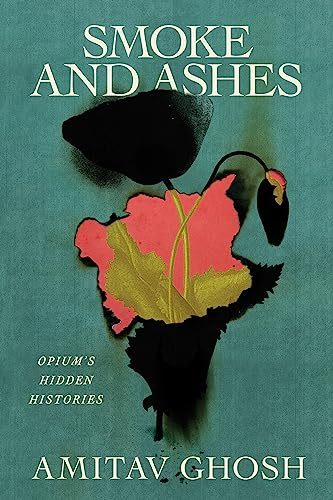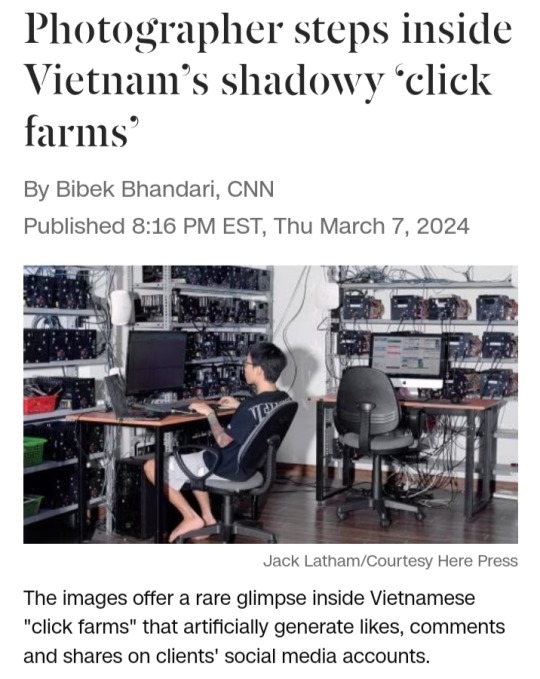#Book Marketing Company in India
Explore tagged Tumblr posts
Photo

Best Digital Marketing Company in Delhi - Best Digital Marketing Company in Delhi and India (on Wattpad) https://www.wattpad.com/1463260179-best-digital-marketing-company-in-delhi-and-india?utm_source=web&utm_medium=tumblr&utm_content=share_reading&wp_uname=Webindiaprocess webindiaprocess is a digital marketing agency that specializes in the latest innovations in online business development and marketing. We provide a comprehensive range of services to allow our clients to grow their businesses.
0 notes
Text
From Palaces to Street Food: How Mysore Redefines India Tours!
Looking for an offbeat Indian holiday filled with royalty, spirituality, and culinary delights? Look no further than Mysore – the cultural capital of Karnataka! This charming city is a unique blend of imperial grandeur and small-town charm that you can experience with a masterfully curated South India Tour Package.
Let’s explore how Mysore redefines India tours with its majestic palaces steeped in history, vibrant markets brimming with flavours, and an overall laidback vibe.
Redefine Your Mysore Tour with the Best Travel Company In India

1). Explore Famous Palaces in Mysore on Your India Trip!
Ever dreamt of walking through pages of a fairytale? Mysore’s palaces might just be the closest real-world embodiment.
Mysore Palace (Amba Vilas Palace)
The Mysore Palace, or as locals fondly recall, Amba Vilas Palace, is not just a palace – its history painted in stone and elegance.
Jaganmohan: The Silent Storyteller
Every brick of Jaganmohan Palace whispers tales of yore, creating an orchestra of memories.
Lalitha Mahal: The Palace in White
Imagine if clouds were crafted into a palace – that’s the ethereal Lalitha Mahal for you. Ready for a celestial sojourn?
Start off by booking comprehensive India Tour Packages with Top Travel Companies in India!
2). Experience Historical Sites in Mysore with South India Tours
Beyond palaces and food, Mysore offers many historically significant sites that provide glimpses into its cultural canvas:
Mysore Zoo – One of the oldest and most popular zoos in India with exotic species.
Chamundi Hills – Home to the 12th century Chamundeshwari Temple and giant statue of Mahishasura.
St. Philomena’s Church – A neo-Gothic style cathedral with impressive stained-glass windows.
So, what are you waiting for? Connect with the leading Travel Company in India for a memorable India Tour!
3). Street Food Markets in Mysore – A Gastronomical Journey
Beyond palaces, Mysore woos you with its bustling bazaarsbrimming with flavors. The street food scene here is worth savouring.
Devaraja Market – Shopper’s Paradise
Dating back to the 1850s, Devaraja Market near Mysore Palace is a heaven for shoppers. The colourful stacks of fruits and flowers vie for attention with aromatic spices and sandalwood curios.
But the main attraction is the food stalls cooking up lip-smacking local eats. Don’t leave without trying the hot bajjis, bondas, and refreshing fruit juices here!
Karamadi Road – Treat for the Tastebuds
Running parallel to the market is Karamadi Road which transforms into a lively food mela as dusk falls. Vendors whip up dosas, vadas, and hot jalebis on makeshift stalls to satisfy your cravings.
This budget foodie’s paradise opens up only post-sunset. So, head here on an empty stomach to enjoy Mysore’s signature street food under fairy lights.
Want to navigate India in a hassle-free manner? Why not book with the Best Tour Agency in India – India by Car and Driver!
Read More About it
#south india tour#south india tour package#india tour#mysore tour#Top Travel Companies In India#travel company in india#best india tour operator#Best Tour Agency In India#Why You Should Book Best India Tours#Best India Tours#india trip#best tour agency in india#Street Food Markets in Mysore#famous places in mysore#Heritage Walks in Mysore#why couples loves mysore
0 notes
Text

May the Islamic New Year bring peace to the world, unity among the ummah, and blessings to your doorstep. Happy Islamic New Year, 2023!
#best digital marketing agency#kreative#best digital marketing#face book ads#seo services#digital marketing agency#digital marketing company#web design#digital marketing#social media#kreativehunks digital agency#best digital marketing company in india
1 note
·
View note
Text
Originally I had attached these tags about British imperial forestry to a post about United States treatment of forests, Indigenous peoples, and land administration from 1900-ish to 1935-ish, during a transition period when clear-cutting logging was threatening profit so the US turned to a German- and British-influenced "sustained yield" forestry paradigm:

And in response, someone added:

In the midst of the first Empire Forestry Conference of scientists, academics, and administrators in 1920, the chairman of the Forestry Commission of Britain, Lord Lovat, said that forests were "grown for use and not for mere ornament ... Forests are national assets only so far as they supply the raw material for industrial development."
Rajan (in Modernizing Nature) directly quotes professor of forestry at Oxford, R.S. Troup, who had been influential in the Indian forest service; at the same forestry conference in 1920, Troup promoted sustained yield like this: "Conservation was a 'wise and necessary measure' but it was 'only a stage towards the problem of how best to utilise the forest resources of the empire'. The ultimate ideal was economic management [...], which regarded forests as capital assets, fixed annual yields in such a manner as to exploit 'to the full interest on this capital [...]' and aimed for equal annual yields so as to sustain the market and provide regular supplies of timber to industry."
One of the big - and easily accessible/readable - summaries of the shift to sustained yield and rise of US and British administrators embracing "economic management" of forests:
Modernizing Nature: Forestry and Imperial Economic Development, 1800-1950. S. Ravi Rajan. 2006.
Concise look at the trajectory from East India Company and Royal Navy timber reserves; to British foresters training in Germany and/or in German traditions (including sustained yield) before joining as officers in the powerful British-Indian land administration bureaucracy; to US scientists being trained by those British administrators; to 1920s/1930s Empire Forestry Conferences promoting industry while identifying forests as essential to power.
---
This has also been covered by:
Vinita Damodaran, Richard Grove, Jeyamalar Kathirithamby-Wells, Jonathan Saha, Gregory Barton, Rohan D'Souza.
More summaries of the situation (shorter length, accessible):
"Imperial Environmentalism or Environmental Imperialism? European Forestry, Colonial Forests and the Agenda of Forest Management in the British Empire, 1800-1900". S. Ravi Rajan, In: Nature and Orient: Essays on Environmental History of South and South East Asia, 1998.
"'Dominion over palm and pine': the British Empire forestry conferences, 1920-1947". J.M. Powell, Journal of Historical Geography, Volume 33, Issue 4, October 2007.
Elsewhere, Elizabeth DeLoughrey and George Handley described it like this: 'These forest reserves [...] did not necessarily represent "an atavistic interest in preserving the 'natural' [...]" but rather "a more manipulative and power-conscious interest in constructing new landscapes [...]."' While Sharae Deckard adds: '[T]he subversive potential of the "green" critique [...] was defused by the extent to which growing environmental sensibilities enabled imperialism to function more efficiently by appropriating botanical knowledge and indigenous conservation methods [...].'
---
And the book:
Commonwealth Forestry and Environmental History: Empire, Forests and Colonial Environments in Africa, the Caribbean, South Asia and New Zealand.
Edited by Damodaran and D'Souza, with work from conferences hosted by Grove, in 19 chapters including:
"Worlds Apart? The Scottish Forestry Tradition and the Development of Forestry in India" (K. Jan Ootheok); "Redeeming Wood by Destroying the Forest: Shola, Plantations and Colonial Conservancy on the Nilgiris in the Nineteenth Century" (Deborah Sutton); "Nature's Tea Bounty: Plant Colonialism and 'Garden' Capitalism in the British Empire" (Jayeeta Sharma); "Industrialized Rainforests: The Ecological Transformation of the Sri Lankan Highlands, 1815-1900"; "Forestry and Social Engineering in the Miombo Woodlands of South-Eastern Tanganyika" (Thaddeus Sunseri)
---
Rajan also points out (again in Modernizing Nature):
"[An] extremely important aspect to the repackaging [of forestry science and management] [...] [and] a critical principle that stands out here is that of sustained yield, or sustainability (Nachhaltigekeit). This concept was fundamental [...]. By the turn of the [twentieth] century a large pan-colonial [British-United States] scientific community was in existence, trained in the German and French tradition of forestry [...]. Following the revolt of 1857, the government of [British] India sought to pursue active interventionist policies [...]. Experts were deployed as 'scientific soldiers' [...]. Dietrich Brandis [...], considered the founder of Indian forestry [...] married Rachel Marshman, who was [...] also the sister of the wife of General Havelock, a close friend of Lord Dalhouse, the then governor-general of India. On Havelock's recommendation, Brandis was put in charge of the forests of [...] Burma [...] and was subsequently appointed inspector-general of forests of India. [...] He also trained prospective foresters of the forest department of the USA, including Gifford Pinchot. [...] Chancellor Bismarck gave the visiting British Prime Minister Gladstone an oak sapling [...]. Prussia prided itself on helping devise [...] modern forest management. [...] [T]he Forestry Commision [...], [or] [t]he Imperial Visionaries, as they became known, believed that an increase in primary production in the tropical dependent empire would result in the growth of the British economy. [...] They deemed their own job to be serving the imperial economy."
---
And also:
Empire Forestry and the Origins of Environmentalism. GA Barton, 2002.
"Colonialism and Green Science: History of Colonial Scientific Forestry in South India, 1820-1920". VM Ravikumar Vejendala, Indian Journal of History of Science, 47:2, pages 241-259, 2012.
"Imperialism, Intellectual Networks, and Environmental Change: Unearthing the Origins and Evolution of Global Environmental History." Vinitia Damodaran and Richard Grove, in Nature's End: History and the Environment, 2009.
"The Reconfiguration of Scientific Career Networks in the Late Colonial Period: The Case of Food and Agriculture Organization and the British Colonial Forestry Service" by Jennifer Gold, and "A Network Approach to the Origins of Forestry Education in India, 1855-1885" by Brett M. Bennett. Both chapters are form Science and Empire, 2011.
Triumph of the Expert: Agrarian Doctrines of Development and the Legacies of British Colonialism. Joseph Morgan Hidge, in Series in Ecology and History, 2007.
Nature and Nation: Forests and Development in Peninsular Malaysia. Jeyamalar Kathirithamby-Wells, 2005. And also: "Peninsular Malaysia in the context of natural history and colonial science." Jeyamalar Kathirithamby-Wells, New Zealand Journal of Asian Studies, Volume 11, Number 1, 2009.
"Empires of Forestry: Professional Forestry and State Power in Southeast Asia, Part 1". Peter Vandergeest and Nancy Lee Peluso, Environment and History 12, no. 1, pages 31-64, February 2006.
#tidalectics#ecologies#multispecies#geographic imaginaries#indigenous#elizabeth deloughrey#british imperial forestry#british empire in south asia#indigenous pedagogies#kathryn yusoff#black methodologies
115 notes
·
View notes
Text
This painting is the apotheosis of the Dutch East India Company, created in the early 1700s.
In a darkened corner, we see Poseidon guiding a ship out to sea. Two putti, or cherubs, seen with a cornucopia and a dove, symbolize peace and prosperity. A woman sits on the left with a key, perhaps ready to unlock the world’s markets for the Dutch. She is accompanied by my favorite part of the painting, an excellent dog. We see Hermes with his Cadeucus, a symbol of ambassadors and traders, and a woman at the feet of the main figure, accompanied by nautical technology and a map to symbolize the navigational skill the company possessed.
And then the symbol of the company herself. She sits on an ornate throne, wearing armor and holding a sword adorned with laurels. She symbolizes military victory. But in her other hand is paperwork — ledgers and account books. Oh, and there’s a tortoise crawling out from under her gown for some reason:

Much more here:
146 notes
·
View notes
Text
I finished reading "Gentlemen of Uncertain Fortune: How Younger Sons Made Their Way in Jane Austen's England" by Rory Muir.
This is a history book that uses examples from Jane Austen novels and also from her relatives and other temporally colocated Georgians to illustrate the careers of non-inheriting gentlemen in the late 18th and early 19th centuries.
So it opens by asking "if the Bennet sisters had all been boys, what would they have done?" and ends by speculating on the answer to that question. In the middle, there's a chapter for each category of gentlemanly profession, ranging from the Church of England to the East India Company.
I do think the framework of "Jane Austen's England" and references to her books is a cynical effort to make the text that Muir actually wanted to write more easily marketed.
But I nevertheless enjoyed nearly everything about this book:
Its scope is narrow enough to feel actually interesting and not so shallow as some other history books
I love the little excerpts from journals and letters that illustrate how these professional men wrote (and spelled!) and how they felt in their own voices
The arrangement of chapters felt organic and orderly and easily understood, and the writing is sedate, unobtrusive and comprehensible, without being stiff or boring
I love the inflation index and the efforts to make the salaries discussed make more sense to modern readers, even in the broadest strokes, and the occasional aside that described what kind of life such a salary might get you
It was interesting and valuable to read reflections on what motives may have caused certain families to choose certain professions, especially as regards the value of connections and patronage
My chief complaint is that the book is very literally falling apart, although this fault cannot fairly be attributed to its writer. It is a recent publication but I had pages just come out no fewer than four times. Rory Muir may be blameless in this scenario but, Yale University Press, I am putting you on notice. Jeez.
Anyway, I think this book has achieved precisely what the writer wanted it to, and it was easy to read to boot. Good stuff.
(This review is also on StoryGraph! You're very welcome to come and join me if you have an account.)
61 notes
·
View notes
Text
RideBoom Revolutionizes Transportation with Innovative Solutions and Unmatched Convenience

RideBoom India is expanding its innovative ridesharing services to 20 more cities across India. Providing affordable, eco-friendly transportation options to the masses.
RideBoom, the leading transportation service provider, is proud to announce its commitment to revolutionizing the transportation industry with innovative solutions and unmatched convenience for riders and drivers alike.
Unmatched Convenience
RideBoom is dedicated to providing unmatched convenience compared to other transportation services. With the RideBoom app, users can easily book a car, taxi, or delivery service right from their mobile devices. The app connects users with nearby drivers or couriers, allowing them to get to their destination or receive their deliveries quickly and efficiently.
Innovative Solutions
RideBoom is constantly innovating to provide the best possible experience for its users. The company has recently expanded its Bike Taxi Service to additional cities, offering an eco-friendly and efficient mode of transportation for short-distance travel. RideBoom is also exploring the integration of electric vehicles into its fleet, demonstrating its commitment to sustainability and the EV revolution.
Commitment to Safety and Reliability
At the core of RideBoom's mission is a dedication to providing safe and reliable transportation services. The company has implemented stringent safety measures and training protocols to ensure that its drivers and couriers deliver a secure and comfortable experience for all users.
Transforming the Ride-Hailing Industry
RideBoom's innovative approach and unwavering commitment to customer satisfaction have positioned the company as a leader in the transportation industry. By continuously introducing new features and adapting to changing market conditions, RideBoom is redefining the way people and goods move, ultimately transforming the ride-hailing landscape.
"RideBoom is committed to revolutionizing the transportation industry and providing our users with the best possible experience," said the RideBoom founder. "We are excited to continue innovating and expanding our services to meet the evolving needs of our customers."
For more information about RideBoom India and its services, please visit https://rideboom.com/india/
About RideBoom India
RideBoom India is the leading ridesharing platform in the country, providing affordable, convenient, and eco-friendly transportation solutions to commuters across India. Founded in 2020, the company has experienced rapid growth and now operates in many cities, connecting passengers with a network of verified drivers. RideBoom India is committed to revolutionizing the way people commute and contributing to a more sustainable future.
#rideboom#delhi rideboom#biketaxi#ola cabs#uber driver#rideboom taxi app#rideboom app#uber taxi#uber#ola
46 notes
·
View notes
Text
2024 Book Review #39 – Inglorious Empire: What the British Did To India by Shashi Tharoor

I honestly forget who first recommended this book to me – quite possible I just googled ‘good indian history books’ and found it that way? - but it’s been on my TBR list for functionally forever at this point. Which meant I went into it essentially blind, with no memory of what if any details I’d been given with the recommendation. Which meant I had a moderately disappointing reading experience just because I was hoping for a narrative history and not an explicit polemical/persuasive text. Still, taken on its own merits as one of those, it’s really quite a good one.
The book is an adaptation and expansion of a performance the author gave at an Oxford debate (arguing against the notion that the British Empire was a good thing) which was recorded and went viral enough to make it a commercially viable prospect. The origin story shines through in the form – aside from an introduction and conclusion, each chapter is a clear and specific argument against some specific justification offered for the British conquest and colonization of India, full to bursting with statistics and quotations buttressing every point.
I would very much like to say that most of it is devoted to stuff the average reader will know anyway (if illustrated with clear and affecting examples), but, going by the apparent public response to the original debate and some polling cited in the conclusion, apparently not! The YouGov polls about the English public’s knowledge and opinion of the Empire are bleak enough that yeah this probably is a direly needed work of public education, if mostly for people who will not at any point read it.
Still, the fact that the British Raj was explicitly and institutionally racist and reserved functionally all positions of real power and authority for white men shouldn’t be much of a surprise, nor the fact that the ‘rule of law’ was basically a sick joke as far as crimes across the colour line went, nor the fact that the extraction of wealth from India to make fortunes in Britain was the explicit goal of policy, nor the fact that resistance (especially resistance successful enough to spook the authorities) was responded to with utter and excessive brutality. All that is basically the meat of what having been a colony means.
That said, I was taken a bit aback by the sheer rapaciousness of early Company government – it’s one thing to hear about oppressive taxation, another to get quoted the census figures of how they were so extreme that enough peasants fleeing their land and homes to look for greener pastures to show up as overall population decline in the areas under HEIC control. Similarly, my understanding of how India was turned into a captive market for British goods was much more subtle and indirect than the outright smashing of looms and legal prohibition of any attempts to compete with British industries that were actually used.
Whereas I did know about the deadly famines that kept occurring throughout the Raj, but the sheer cartoonish malevolence of colonial authorities when faced with them always manages to shock me a bit. ‘Nature’s solution to overpopulation’ was a really horrifyingly opinion at the time.
The audience of the debate performance the book’s based on definitely shines through in the choice of sources – wherever possible, Tharoor quotes from or cites western (Anglo-American, generally) sources for his eye-witness accounts and always takes care to introduce and ground them in terms of western governments or academia. The quotes themselves are all helpful illustrations, though there’s probably slightly more than are really strictly necessary – I’m pretty sure by wordcount at least a chapter of the book was actually written by Will Durant.
I’m not sure if it’s because of the original format or just how Tharoor writes, but the book also just has a great love of adjectives. Seemingly every source referenced is ‘historic’ or ‘path-breaking’ unless it is merely ‘compendious’ or outright ‘invidious’. Not a bad thing, but once I noticed it I was totally unable to stop doing so.
The book is straightforward polemic and Tharoor makes no bones about his position, so I take his verging-on-idyllic descriptions of pre-colonial Indian governance (especially regarding land tenure and caste) and the probability that India would have unified into a modern nation state without colonialism a dose pour of salt. There’s a few other inaccuracies I noticed (referring to the East India Company’s theft of Chinese tea plans as the ‘birth of agricultural espionage), for example), but it was all in the realm of little asides or colourful anecdotes rather than anything load-bearing.
It is rather funny that the book repeatedly draws comparisons with French colonies to argue that India was worst off, on the grounds that Paris at least made gestures towards integrating Indochina or Algeria and their peoples into France (however inadequate and hypocritical those efforts were), whereas in India the maintenance of total domination and the clear policy that India and Indians were things to be exploited for the benefit of England never changed. Funny, because from the book of Vietnamese history I read a few months ago the perspective of nationalists in Indochina was quite the reverse, seeing the English as at least somewhat honest brokers who were willing to grant some level of (limited and inadequate) self-government, compared to the French. Grass is always greener, I guess.
Though that does get at Tharoor’s argument as to why the British were worse not just in degree but in kind to the Mughals and any other empire-builders from outside South Asia who had come before them. The Mughals became Indian, both in the simple material sense that all their taxes didn’t end up back in Samarkand and Indian merchants were intentionally ruined for the benefit of traditional central asia trade routes, and in the more cultural sense that the ruling class set down roots and intermarried with their subjects rather than establishing a cloistered ruling class. Instead, the Raj was more akin to Tamerlane’s sack of Delhi, extended across 200 years. (One gets the sense Tharoor thinks a permanent settler population moving into stolen palaces would have been preferable to the rotation of soldiers and officials arriving from the metropole for long enough to get rich before heading back to build mansions in the Home Counties.)
Also, speaking of Vietnamese history, I only have a sample size of two but it’s interesting how in both cases a class of liberal (in the western sense) intellectuals and bourgeois emerged who tried to take the colonial propaganda at its word and enter some sustainable partnership with the imperial power – and in both cases got at best ignored and at worst imprisoned, tortured and executed for their trouble.
Anyways, interesting read, if one that makes me want something more specific and rigorous about basically any specific section of it (though, not to jump up and yell ‘Canada Mentioned!’ but every time Trudeau was used as an example of a colonial power’s leader handling the apologizing and acknowledging stuff gracefully and well I had to really try not to laugh).
40 notes
·
View notes
Text

Italian company converts discarded fishing nets into chairs, car mats and Prada bags
Since 2009, Giulio Bonazzi, the son of a small textile producer in northern Italy, has been working on a solution: an efficient recycling process for nylon. As CEO and chairman of a company called Aquafil, Bonazzi is turning the fibers from fishing nets – and old carpets – into new threads for car mats, Adidas bikinis, environmentally friendly carpets and Prada bags.
For Bonazzi, shifting to recycled nylon was a question of survival for the family business. His parents founded a textile company in 1959 in a garage in Verona, Italy. Fifteen years later, they started Aquafil to produce nylon for making raincoats, an enterprise that led to factories on three continents. But before the turn of the century, cheap products from Asia flooded the market and destroyed Europe’s textile production. When Bonazzi had finished his business studies and prepared to take over the family company, he wondered how he could produce nylon, which is usually produced from petrochemicals, in a way that was both successful and ecologically sustainable.
The question led him on an intellectual journey as he read influential books by activists such as world-renowned marine biologist Sylvia Earle and got to know Michael Braungart, who helped develop the Cradle-to-Cradle ethos of a circular economy. But the challenges of applying these ideologies to his family business were steep. Although fishing nets have become a mainstay of environmental fashion ads—and giants like Dupont and BASF have made breakthroughs in recycling nylon—no one had been able to scale up these efforts.
For ten years, Bonazzi tinkered with ideas for a proprietary recycling process. “It’s incredibly difficult because these products are not made to be recycled,” Bonazzi says. One complication is the variety of materials used in older carpets. “They are made to be beautiful, to last, to be useful. We vastly underestimated the difficulty when we started.”
Soon it became clear to Bonazzi that he needed to change the entire production process. He found a way to disintegrate old fibers with heat and pull new strings from the discarded fishing nets and carpets. In 2022, his company Aquafil produced more than 45,000 tons of Econyl, which is 100% recycled nylon, from discarded waste.
More than half of Aquafil’s recyclate is from used goods. According to the company, the recycling saves 90 percent of the CO2 emissions compared to the production of conventional nylon. That amounts to saving 57,100 tons of CO2 equivalents for every 10,000 tons of Econyl produced.
Bonazzi collects fishing nets from all over the world, including Norway and Chile—which have the world’s largest salmon productions—in addition to the Mediterranean, Turkey, India, Japan, Thailand, the Philippines, Pakistan, and New Zealand. He counts the government leadership of Seychelles as his most recent client; the island has prohibited ships from throwing away their fishing nets, creating the demand for a reliable recycler. With nearly 3,000 employees, Aquafil operates almost 40 collection and production sites in a dozen countries, including four collection sites for old carpets in the U.S., located in California and Arizona.
#solarpunk#solarpunk business#solarpunk business models#solar punk#reculture#fishing nets#materials innovation#circular#waste#italy
25 notes
·
View notes
Text
My mum remembers Coca-Cola coming to the country for the first time.
The first time that bottled coke, in the sleek glass bottles with the elaborately painted logo, was sold out of crates and chillers by a vendor who would cycle from house to house, stacked crates in tow.
They'd seen them before, of course. Granddad was very well-travelled, his work took him across the country and occasionally overseas. It made him a knowledgeable, well-read and respected man. He'd been abroad: Malaysia, Germany, Indonesia, other places I wasn't told about. He'd seen Coca-Colas. He was an adventurer of sorts, which I suppose shouldn't seem too out of the ordinary for someone who had chosen a career of tinkering with chemicals professionally. Wherever he travelled, mum recounted, he'd bring back a little souvenir. Music from abroad, posters, books, branded sweets that weren't sold in protectionist India.
It wasn't an unreasonable decision. After 200 years of being leached dry and Indian industry being virtually nonexistent, it wasn't hard to see why post-colonial India had closed off its domestic industries to outsiders. The government took control of most local trade and incentivised the Indian economy to grow without competition from wealthier players (at that point, there were companies that were wealthier than the entire nation of India).
This did however mean that no international products were sold in India. Imports were limited to the most basic parts and things that could not be procured locally, often raw materials. Coca-Cola was limited to glimpses in foreign films, and of course, to those who travelled. (Nothing was banned, of course. It was about the economy, not access to international goods.)
This changed in 1991. Finance Minister Manmohan Singh's decision to deliberately devalue the rupee, open up the tightly-controlled Indian market for trade and usher in the age of globalisation introduced the world to India again, this time in its local paan shop (or cornershop, aware of the fact that like 3 people that follow me at best will know what that means). Mum remembers buying Coca Cola for the first time, in rupees, locally in 1991 as a girl. It sounds like a very small and trivial thing, but it was part of a decision that changed the Indian economy's fortunes forever.
From a country that had maybe two weeks' worth of forex reserves in tow, India evolved to become one of the fastest-growing GDPs in the world. It was once again Dr. Manmohan Singh's policies, this time as Prime Minister in 2008, that meant India escaped the worst of the global financial crisis. The economy didn't crash, didn't go into recession, fewer jobs were lost, and largely, India emerged unscathed compared to larger economies out west.
But I think about some of these little things, and how he changed the country forever, as the nation observes his passing today.
#politics#economy#history#world history#culture#coca cola#writing#manmohan singh#global news#global politics#news#world news#desi#India
5 notes
·
View notes
Photo

Smoke and Ashes: Opium's Hidden Histories
"Smoke and Ashes: Opium’s Hidden Histories" is a sweeping and jarring work of how opium became an insidious capitalistic tool to generate wealth for the British Empire and other Western powers at the expense of an epidemic of addiction in China and the impoverishment of millions of farmers in India. The legacy of this “criminal enterprise,” as the author puts it, left lasting influences that reverberate across cultures and societies even today.
Written in engaging language, Smoke and Ashes is a scholarly follow-up to the author’s famous Ibis trilogy, a collection of fiction that uses the opium trade as its backdrop. In Smoke and Ashes, the author draws on his years-long research into opium supplemented by his family history, personal travels, cross-cultural experience, and expertise in works of historical verisimilitude. Composed over 18 chapters, the author delves into a diverse set of primary and secondary data, including Chinese sources. He also brings a multidimensional angle to the study by highlighting the opium trade's legacy in diverse areas such as art, architecture, horticulture, printmaking, and calligraphy. 23 pictorial illustrations serve as powerful eyewitness accounts to the discourse.
This book should interest students and scholars seeking historical analysis based on facts on the ground instead of colonial narratives. Readers will also find answers to how opium continues to play an outsize role in modern-day conflicts, addictions, corporate behavior, and globalism.
Amitav Ghosh’s research convincingly points out that while opium had always been used for recreational purposes across cultures, it was the Western powers such as the British, Portuguese, the Spaniards, and the Dutch that discovered its significant potential as a trading vehicle. Ghosh adds that colonial rulers, especially the British, often rationalized their actions by arguing that the Asian population was naturally predisposed to narcotics. However, it was British India that bested others in virtually monopolizing the market for the highly addictive Indian opium in China. Used as a currency to redress the East India Company (EIC)’s trade deficit with China, the opium trade by the 1890s generated about five million sterling a year for Britain. Meanwhile, as many as 40 million Chinese became addicted to opium.
Eastern India became the epicenter of British opium production. Workers in opium factories in Patna and Benares toiled under severe conditions, often earning less than the cost of production while their British managers lived in luxury. Ghosh asserts that opium farming permanently impoverished a region that was an economic powerhouse before the British arrived. Ghosh’s work echoes developmental economists such as Jonathan Lehne, who has documented opium-growing communities' lower literacy and economic progress compared to their neighbors.
Ghosh states that after Britain, “the country that benefited most from the opium trade” with China, was the United States. American traders skirted the British opium monopoly by sourcing from Turkey and Malwa in Western India. By 1818, American traders were smuggling about one-third of all the opium consumed in China. Many powerful families like the Astors, Coolidges, Forbes, Irvings, and Roosevelts built their fortunes from the opium trade. Much of this opium money, Ghosh shows, also financed banking, railroads, and Ivy League institutions. While Ghosh mentions that many of these families developed a huge collection of Chinese art, he could have also discussed that some of their holdings were most probably part of millions of Chinese cultural icons plundered by colonialists.
Ghosh ends the book by discussing how the EIC's predatory behaviors have been replicated by modern corporations, like Purdue Pharma, that are responsible for the opium-derived OxyContin addiction. He adds that fossil fuel companies such as BP have also reaped enormous profits at the expense of consumer health or environmental damage.
Perhaps one omission in this book is that the author does not hold Indian opium traders from Malwa, such as the Marwaris, Parsis, and Jews, under the same ethical scrutiny as he does to the British and the Americans. While various other works have covered the British Empire's involvement in the opium trade, most readers would find Ghosh's narrative of American involvement to be eye-opening. Likewise, his linkage of present-day eastern India's economic backwardness to opium is both revealing and insightful.
Winner of India's highest literary award Jnanpith and nominated author for the Man Booker Prize, Amitav Ghosh's works concern colonialism, identity, migration, environmentalism, and climate change. In this book, he provides an invaluable lesson for political and business leaders that abdication of ethics and social responsibility have lasting consequences impacting us all.
Continue reading...
18 notes
·
View notes
Text
HP Next Gen OCs: Band Edition
In my version of the next gen, Fred Weasley grows up and opens a nightclub that caters mostly to the wizarding community (this includes squibs and muggles who have some connection to the community), called Colours.
Within the club, he has live music performed by an in-house band called "No One of Consequence" — a group of five with varying backgrounds that he met by pure chance in Diagon Alley. He hired them almost immediately after hearing them play, and they live together in a flat above the club to make it easier to come to work.
Fred only knows a little about each of their backgrounds but trusts them implicitly and loves their company. They become a huge draw to the club, which is even more exciting. Considers them to be his partners, even though he's technically their boss; he sees them as equals.

Name: Malika Shaan
Origin: India
Wand: none
Patronus: none
Profession: Drummer
Sexuality: bisexual
Details: born in India to a long line of illustrious potioneers. For generations, her family has produced incredibly skilled wizards and witches; until she was born. A squib with absolutely no magical inclination, rather than being accepted, she was shunned by her family and considered a dark omen, a sign of their families downfall. The only member of her family who cared for her was her great, great grandfather Malik Shaan, whom she was named for. The patriarch of the family, he was the only one who loved her and took care of her. The rest of her family — parents, grandparents, aunts, uncles, cousins, siblings — abused and neglected her, locking her in the family estate and refusing to admit her existence to the rest of the wizarding world. She was an embarrassment, after all.
Malik despised the way the rest of the family treated her, seeing her as good fortune rather than bad, but his age and perceived mental decline made it so the rest of the family refused to acknowledge his will despite being the head of the family. So, out of spite, Malik gifts Malika an ancient book of potions that had been passed down for generations in their family. An heirloom meant to be passed to the next head of house, Malik decides they don't deserve it. So when he feels his health fading he gives the book to Malika and tells her to leave the country, because the family no longer deserves the prestige of their name if they're willing to abuse someone not of magical prowess. He passes away not long after Malika leaves.
She can't open the book as it's locked with a magical seal, but she never lets it out of her sight. She promised her grandfather she'd take care of their families legacy, and she intends to do so even at the cost of her own wellbeing. She wears a gold locket around her neck decorated with a crescent moon and a star. Gifted to her by Malik, it holds a photograph of the two of them and is her most prized possession.
Wears loose clothes, generally autumnal colors, and has a gold septum + gold labret piercing. Carries her drumsticks everywhere she goes. In a way, it makes her feel like she's holding a magic wand, which makes her feel closer to her grandfather. A part of her does feel disappointed and angry that she doesn't have magic but has learned to live with it.

Name: Adrien "Ren" Taylor
Origin: Australia
Wand: acacia and re'em horn (an heirloom wand passed down from her mother)
Patronus: bat
Profession: Bassist + Vocalist
Sexuality: aroace
Details: born in the Australian outback, five minutes older than her younger twin brother. Her mother was a Magizoologist while her father secretly worked in black market creature sales and transport. Mr. Taylor lied to his wife about what he did for work in order to access the rare magical beasts that she worked with as a Magizoologist. She was furious when she found out, but instead of letting her leave to call the authorities, he threw her into a room with a chained and injured beast and let her be torn to shreds. He was happy to be rid of her, but was left with two very young children to raise, and he did not want to deal with them.
He and his gang of black market thugs raised Adrien and her brother, teaching them magic through homeschooling and trying to instill a deep fear and hatred of magical beasts in the twins to make them "useful" to the gang. At a young age, her father locks her in an arena with a dangerous beast and is badly wounded. Instead of bringing her to a healer, her father allows her to develop blood poisoning and sepsis, claiming if she can't pull through on her own, then she simply isn't strong enough.
Out of desperation, her brother uses a rare and forbidden blood magic to brew a potion that remarkably enough manages to heal Adrien, but with the unforseen side effect of turning her into what the magical world considers to be a vampire; she develops a strange blood anemia that alters her genes to the point where she needs to consume blood to maintain healthy iron levels; though she hates taking blood from animals or people.
After discovering her vampirism, she and her brother are forced to acknowledge the fact that if their father discovered it, he would likely take advantage of it and extort her condition. Vampire blood and vampire fangs are rare commodities, after all, and their father wouldn't be against selling his own daughter for money. Even if he'd be selling her for parts. So they take what they can carry and run away.
Adrien manages her condition with iron supplements and isn't against stealing bags of blood from hospitals if she absolutely needs to. She's extremely pale, and the pigment faded from her hair as a side effect of her vampirism, leaving it white. Adrien is physically stronger than most people, amplified when she drinks actual blood. She burns easily in the sun, so sunblock and aloe vera are her best friends. Her eyes are naturally blue, but they grew paler after her change, the pigment fading just like it did in her hair.
She normally dresses in all black and has nose bridge and snakebite piercings, both silver.

Name: Mason Taylor
Origin: Australia
Wand: spruce and billywig stinger
Patronus: salamander
Profession: Guitarist | DJ
Sexuality: gay
Details: five minutes younger than his sister, they used to be near identical before Adrien's change, but Mason was born with heterochromatic eyes, which always made him unique. His left eye is the same blue as Adrien's, and just like his sister, he's subjected to alarming abuse by their father. A bit before his sister is injured, their father throws him into a cage with a frightened dragon that reacts by biting his left leg clean off just above the knee. Fit with a prosthetic and walks with a limp.
Transmasc, which adds to the harassment from his father and the gang, but his mother and sister have always been outrageously supportive. It isn't until they run away that he's able to work towards a life — and a body — that Mason can feel comfortable in.
This is reason number 7000 that he loves working for Fred at the club. They're both transmasc and actually have a ton in common, so they get along outrageously well. They have similar senses of humor, enjoy the same sort of media, and have a lot of respect for each other.
GayTransmascJokes™. They are insufferable together (Adrien is very happy for him).
Has a more extroverted personality than his sister, though they both still love animals and feel no hatred or vengeance towards them for the injuries they both sustained. He wears an old bomber jacket with a fur neckline, as well as a brown corded cattleman hat with an occamy feather stuck in the hat band. The feather was a gift from their mother. Not much for tattoos, but his ears are pierced. He and Adrien share a set of earrings that used to belong to their mother. They each wear one of the earrings.

Name: Imamu Abara
Origin: Uganda
Wand: cherry and augurey tail feather
Patronus: blackbird
Profession: Pianist
Sexuality: straight
Details: a graduate of Uagadou and a powerful seer, extremely talented in Divination and reading runes; though his personality is not what one would expect of a seer (basically the opposite of Trelawney). He gets his abilities from his mother's side of the family, where there have been powerful prophets in every single generation without fail. They can be identified by the alarming eye color that they all share — piercing gold, almost yellow, and practically glowing. Imamu hides his eyes behind extremely dark sunglasses in an attempt to protect himself from people who may want to take advantage of his ability.
He has prophetic dreams and can see snippets of people's pasts and futures when he looks them in the eye, which is why he does not like looking people in the eye. He's extremely talented at scrying through mirrors, which is how he prefers to "see". His mother is also a Uagadou graduate, born in Uganda like him, and his father is from London. They move to the UK after Imamu graduates.
In addition to his seeing abilities, he is also an animagus and can transform into a blackbird. He does not need a wand to perform spells, but his father insisted on getting him one when they moved to London, as additional padding of protection. The more "normal" he appears, the less people will badger him, and wandless magic is very rare in England, which makes him stand out too much.
A jokester with a sharp sense of humor and extremely charismatic. He plays into his appearance because he knows he's attractive and is very proud of it (he is his mother's son). He can play both the drums and the piano, just prefers the piano. It was his idea to start the band as a cover to protect his identity as well as his friends' identities because all of them are being hunted in some way.
Is absolutely enamored with Roxanne because he can not see into her head, and he likes that. She's a mystery to him, not realizing that the reason he can't see her future is because her future is with him (and no seer alive is able to see their own future).

Name: Julian "Jule" Reinhardt
Origin: Germany
Wand: willow and veela hair/dragon heartstring
Patronus: occamy
Profession: Bassist + Vocalist
Sexuality: demisexual
Details: born at the edges of the Black Forest to a fairly normal wizarding family, if allowed to grow up properly, he would have attended Durmstrang. Tragically, he was never given the opportunity, as he was kidnapped when he was extremely young by a pack of werewolves who lived in the deep mountains of the Black Forest.
A "family" consisting of just lycanthropes, though very few of them are related by blood. Their way of expanding on their "family" is by choosing young children and stealing them from their families, biting them for the purpose of creating a legacy of lycanthropy to be passed down. It's thought that the first werewolf was made from the Black Forest, which makes the "family" blind with the desire to maintain the purity of their history. Instead, they turn into murderers, kidnappers, and abusers. Jule is just one of the victims.
Julian has no memory of his original family and is not taught much magic by the pack, nor does he have a wand. He does know how the pack works, though, so he knows he had a family and that they are no longer alive. Unlike the rest of the pack, Julian has always felt like an outcast. In an act of desperation to escape the abuse, he decides to run away, though he is in constant fear of hurting people along the way.
He's absolutely terrible around people because of his isolation and has a lot of trouble trying to figure out how to act around them. Extremely quiet and cautious, he hates being touched. He's nervous and anxious but very protective of his people.
He's physically stronger than he realizes because of his lycanthropy (he doesn't know his own strength; in fact, he thinks he's extremely weak). Abysmal confidence (think albus pre-delphini). He doesn't have much faith in his magic and doesn't get a wand until he moves to England. Imamu takes him to Diagon Alley and Olivanders, where he ends up being chosen by an unusual willow wand with a core of braided dragon heartstring and veela hair.
Keeps his black hair long enough that he can use his bangs to cover his right eye, which he damaged badly during one of his first transformations, leaving him half blind and badly scarred. No one can see the scars if his bangs are in place and if they don't look too close. Most of his scars are on the rest of his body rather than his face, which he hides under thick layers of dark clothes: high neck shirts with long sleeves, leather gloves, jackets, etc.
Keeps his nails cut and filed as short as he can to the point where they sometimes bleed because he doesn't want to accidentally scratch someone. Wears gloves as an extra precaution. Also wears a black face mask over his nose and mouth when he's in public (that's how terrified of himself he is).
Being on the stage playing bass with his friends, who love him and understand him in spite of everything, is the only time he feels like he can be anything other than a victim. He's on the stage playing the first time he sees Louis, who he falls in love with at first sight. He doesn't realize it at first and thinks the racing of his heart is a sign of fear as that's the only thing he's ever felt in the past.
#everyone meet the crew 🫰🫰🫰#ive had these kids in the background for fucking months#my profile pic is a commission of adrien#i see sooooo many hp ocs from hogwarts and even from ilvermorny#but what about the rest of the world????#give me an australian vampire or give me death lmaoooooo#harry potter next gen oc#harry potter next gen#next gen headcanons#hp next gen#harry potter original character#harry potter next generation original characters#harry potter next generation#harry potter#louis delacour weasley#roxanne weasley#fred weasley ii#let the man run a nightclub damnit hed fucking kill it#imamu and julian are the oc love interests of roxanne and louis of course#no one of consequence
19 notes
·
View notes
Quote
So what you actually see, you know, this idea of the free market, is premised upon the idea that there are these decentralising forces that mean that no one institution is able to gain and hold power in the market for a very long time. But the way that capitalism actually works when you analyse it from the perspective of production, is that there is an inherent tendency towards the centralisation of power in ever fewer hands, and that that process is augmented by the way in which corporate entities are able to involve themselves in democratic politics to basically get what they want. And that, I argue, is an inherent part of capitalism. So lots of people say that’s crony capitalism when the state is captured by vested interests. And what I’m saying is that actually, no, go back to the very origins of capitalism. So something like the East India Company, which was an imperial vehicle that literally governed parts of India, that was a joint venture between the state and a bunch of merchants. And that relationship lies at the very heart of the development of capitalism, and it has done ever since, as I chart over the course of the book. So this isn’t crony capitalism, this is capitalism that has always been.
Grace Blakeley
13 notes
·
View notes
Text

Guru is an aspiration, Guru is an inspiration, Guru is everything. May Guru’s blessings always Shower on You. 𝓗𝓪𝓹𝓹𝔂 𝓖𝓾𝓻𝓾 𝓟𝓾𝓻𝓷𝓲𝓶𝓪
#happygurupurnima#gurupurnima2023#kreativehunksdigitalagency#DigitalMarketing#SEO#SMO#SEM#SMM#SearchEngineOptimization#socialmediamarketingagency#softwaredevelopment#digitalmarketing#socialmediamarketingservices
#digitalmarketingagency#digital#socialmediamarketing
s #businessgrowth#businessgrowthexperts
#marketingagency
For more details visit us @ https://kreativehunks.com
#digital marketing agency#kreative#best digital marketing#best digital marketing agency#seo services#face book ads#digital marketing company#web design#digital marketing#social media#kreativehunks#best digital marketing company in india#best digital agencies in hyderabad#best digital marketing course#best digital marketing institute#seo#social media management#social media agency
1 note
·
View note
Text
Because most medicines were produced from [...] plants [...] these early “pharmaceutical monopolies” required full control of the production and trade of a species. Russia successfully managed the rhubarb trade in the seventeenth and eighteenth centuries, while Spain controlled the distribution [...] from Spanish America, mainly cinchona from Peru, in the same period. “True” cinnamon grew only on Sri Lanka, so whoever controlled the island could dominate the cinnamon trade. The Portuguese were the first to create a monopoly on the cinnamon trade there in the early seventeenth century. That monopoly was later optimized by the Dutch in the late eighteenth century [...].
“True” should indeed be in quotation marks here - the term reflects the historically contingent tastes of Europeans, rather than any botanical category [...]. The rarity of cinnamon in the early modern period made it one of the most coveted spices of that era, and European countries without direct access to the cinnamon trade tried to imitate, substitute, steal, smuggle, or transplant the “true” product from Sri Lanka. [...]
---
In the early modern period, cinnamon was also important both as an exotic commodity and as an important therapeutic substance. The Dutch East India Company (VOC), which controlled Sri Lanka between 1658 and 1796, was well aware of this. The VOC vigorously exploited the Salagama - [...] specialized Sri Lankan cinnamon peelers - to supply enough cinnamon, which for a long time was gathered from forests. Only after the peelers rebelled, leading to a war that lasted between 1760 and 1766, did the company revise its production policy.
Experiments with “cinnamon gardens” (kaneeltuinen in Dutch) led to enormous successes, and the company eventually grew millions of cinnamon trees on plantations in the final decades of the eighteenth century. Meanwhile, competitors of the Dutch had come up with their own solutions [...]: Spain had started growing other Cinnamomum species on plantations in the Philippines, while France and Britain succeeded in transplanting cinnamon to islands in the Caribbean. But the Dutch monopoly was not simply threatened by outside competition. Smuggling, by peelers or VOC personnel, was strictly forbidden and severely punished. [...]
---
Hendrik Adriaan van Rheede tot Drakenstein (1636–1691) was the VOC administrator on India’s Malabar Coast when he started experimenting with cinnamon oil in the 1670s.
He concluded that the oil, which he extracted from the roots of local cinnamon trees, was of better quality than oil from cinnamon trees on Sri Lanka. Van Rheede reported these results in his entry on cinnamon in volume 1 of the Hortus Indicus Malabaricus, the twelve-volume book that was produced by a team of local and European scholars, and supervised by Van Rheede himself.
Van Rheede’s assessment of cinnamon - in fact, the very publication of a multi-volume work about the flora of Malabar - infuriated the governor of Sri Lanka, Rijckloff van Goens, who had secured the cinnamon monopoly of Sri Lanka for the Dutch. Van Goens insisted that Van Rheede stop his medical experiments, claiming that the monopoly was at risk if the cinnamon trade was extended beyond the island of Sri Lanka.
But Van Goens was not so much concerned about the therapeutic efficacy of cinnamon from either of the two regions. He was motivated by an imperial agenda and regarded the natural products of Sri Lanka as superior to anything similar in the region.
The experiments of Van Rheede, who was his former protégé, threatened not so much the botanical quality of the product, or the commercial interests of the Dutch East India Company, but rather the central position of Sri Lanka in the Dutch colonial system and the position of Van Goens as the representative of that system.
---
Even when Sri Lanka still only produced cinnamon that grew in the wild, the Dutch harvested enough to supply an international market and were able to dictate the availability and price level throughout the world. The monopoly, whether defined in commercial or pharmaceutical terms, was not easily put at risk by efforts like Van Rheede’s. Those involved in the early modern cinnamon trade were motivated by various reasons to defend or undermine the central position of Sri Lankan cinnamon: botanical, medical, commercial, or imperial. These motives often overlapped.
---
All text above by: Wouter Klein. “Plant of the Month: Cinnamon.” JSTOR Daily. 17 February 2021. “Plant of the Month” series is part of the Plant Humanities Initiative, a partnership of Dumbarton Oaks and JSTOR Labs. [Bold emphasis and some paragraph breaks/contractions added by me. Presented here for commentary, teaching, criticism purposes.]
#dutch imperialist infighting#abolition#ecology#imperial#colonial#ecologies#multispecies#tidalectics#archipelagic thinking#geographic imaginaries#agents of empire#indigenous#indigenous pedagogies#black methodologies#sandalwood and cinnamon
152 notes
·
View notes
Text

(CNN) — Jack Latham was on a mission to photograph farms in Vietnam — not the country’s sprawling plantations or rice terraces but its “click farms.”
Last year, the British photographer spent a month in the capital Hanoi documenting some of the shadowy enterprises that help clients artificially boost online traffic and social media engagement in the hope of manipulating algorithms and user perceptions.
The resulting images, which feature in his new book “Beggar’s Honey,” provide rare insight into the workshops that hire low-paid workers to cultivate likes, comments and shares for businesses and individuals globally.
“When most people are on social media, they want nothing but attention — they’re begging for it,” Latham said in a phone interview, explaining his book’s title.
“With social media, our attention is a product for advertisers and marketers.”

In the 2000s, the growing popularity of social media sites — including Facebook and Twitter, now called X — created a new market for well-curated digital profiles, with companies and brands vying to maximize visibility and influence.
Though it is unclear when click farms began proliferating, tech experts warned about “virtual gang masters” operating them from low-income countries as early as 2007.
In the following decades, click farms exploded in number — particularly in Asia, where they can be found across India, Bangladesh, Indonesia, the Philippines, and beyond.
Regulations have often failed to keep pace: While some countries, like China, have attempted to crack down on operations (the China Advertising Association banned the use of click farms for commercial gain in 2020), they continue to flourish around the continent, especially in places where low labor and electricity costs make it affordable to power hundreds of devices simultaneously.
‘Like Silicon Valley startups’
Latham’s project took him to five click farms in Vietnam.
(The click farmers he hoped to photograph in Hong Kong “got cold feet,” he said, and pandemic-related travel restrictions dashed his plans to document the practice in mainland China).
On the outskirts of Hanoi, Latham visited workshops operating from residential properties and hotels.
Some had a traditional setup with hundreds of manually operated phones, while others used a newer, compact method called “box farming” — a phrase used by the click farmers Latham visited — where several phones, without screens and batteries, are wired together and linked to a computer interface.

Latham said one of the click farms he visited was a family-run business, though the others appeared more like a tech companies.
Most workers were in their 20s and 30s, he added.
“They all looked like Silicon Valley startups,” he said. “There was a tremendous amount of hardware … whole walls of phones.”
Some of Latham’s photos depict — albeit anonymously — workers tasked with harvesting clicks.
In one image, a man is seen stationed amid a sea of gadgets in what appears to be a lonely and monotonous task.
“It only takes one person to control large amounts of phones,” Latham said. “One person can very quickly (do the work of) 10,000. It’s both solitary and crowded.”
At the farms Lathan visited, individuals were usually in charge of a particular social media platforms.
For instance, one “farmer” would be responsible for mass posting and commenting on Facebook accounts, or setting up YouTube platforms where they post and watch videos on loop.
The photographer added that TikTok is now the most popular platform at the click farms he visited.

The click farmers Latham spoke to mostly advertised their services online for less than one cent per click, view or interaction.
And despite the fraudulent nature of their tasks, they seemed to treat it like just another job, the photographer said.
‘There was an understanding they were just providing a service,” he added. “There wasn’t a shadiness. What they’re offering is shortcuts.”
Deceptive perception
Across its 134 pages, “Beggar’s Honey” includes a collection of abstract photographs — some seductive, others contemplative — depicting videos that appeared on Latham’s TikTok feed.
He included them in the book to represent the kind of content he saw being boosted by click farms.
But many of his photos focus on the hardware used to manipulate social media —webs of wires, phones and computers.
“A lot of my work is about conspiracies,” Latham said. ” Trying to ‘document the machines used to spread disinformation’ is the tagline of the project. The bigger picture is often the thing we don’t see.”

Click farms around the world are also used to amplify political messages and spread disinformation during elections.
In 2016, Cambodia’s then-prime minister Hun Sen was accused of buying Facebook friends and likes, which according to the BBC he denied, while shadowy operations in North Macedonia were found to have spread pro-Donald Trump posts and articles during that year’s US presidential election.
While researching, Latham said he found that algorithms — a topic of his previous book, “Latent Bloom” — often recommended videos that he said got increasingly “extreme” with each click.
“If you only digest a diet of that, it’s a matter of time you become diabetically conspiratorial,” he said.
“The spreading of disinformation is the worst thing. It happens in your pocket, not newspapers, and it’s terrifying that it’s tailored to your kind of neurosis.”
Hoping to raise awareness of the phenomenon and its dangers, Latham is planning to exhibit his own home version of a click farm — a small box with several phones attached to a computer interface — at the 2024 Images Vevey Festival in Switzerland.
He bought the gadget in Vietnam for the equivalent of about $1,000 and has occasionally experimented with it on his social media accounts.
On Instagram, Latham’s photos usually attract anywhere from a few dozen to couple hundred likes.
But when he deployed his personal click farm to announce his latest book, the post generated more than 6,600 likes.
The photographer wants people to realize that there’s more to what they see on social media — and that metrics aren’t a measurement of authenticity.
“When people are better equipped with knowledge of how things work, they can make more informed decisions,” he said.

“Beggar’s Honey,” co-published by Here Press and Images Vevey, is available now.
#Jack Latham#click farms#box farms#Hanoi#Vietnam#Beggar’s Honey#box farming#social media#algorithms#user perception#trolls#PR#marketing#advertising#likes#comments#shares#digital profiles#virtual gang masters#bots#spam#China Advertising Association#click farmers#mass post#disinformation#misinformation#fake news#metrics
14 notes
·
View notes